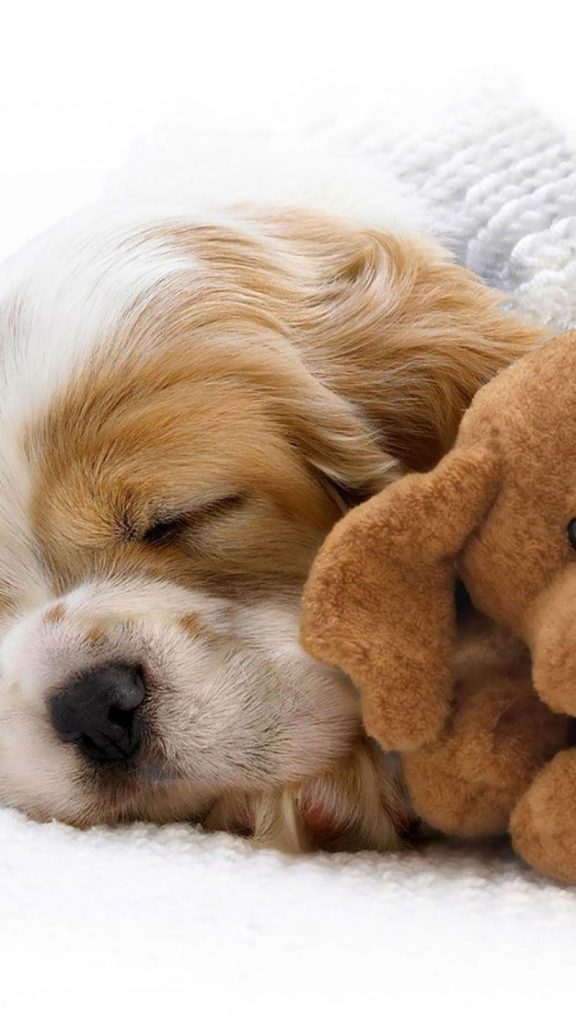Introducing the power of play in strengthening the connection between you and your furry companion, we delve into the fascinating world of dog training toys. These aren’t just mere playthings; they’re tools that can elevate your dog’s experience, fostering a bond that’s built on mutual respect, understanding, and joy. As we navigate through the intricacies of pet ownership, these toys become more than just a pastime—they become an integral part of your pet’s daily life, contributing to their physical health, mental stimulation, and overall happiness. Let’s unravel the many facets of dog training toys and how they can enrich the life of your four-legged friend.
The Ultimate Guide to Dog Training Toys: Enhancing Your Pet’s Mind and Body
Navigating the world of dog training toys can be overwhelming, but with the right tools, you can significantly enhance both the mental and physical well-being of your furry friend. These toys are not just for playtime; they are designed to engage your dog’s mind, reinforce good behavior, and provide a healthy outlet for their energy. Let’s dive into the essentials of choosing and using dog training toys effectively.
Interactive Chews and Teasers
One of the most popular types of dog training toys are interactive chews and teasers. These toys are perfect for dogs who love to gnaw and can be a great way to provide mental stimulation. Look for toys made from durable materials like natural rubber or sturdy plastic that can withstand rigorous chewing. Teasers, on the other hand, are great for dogs who need a bit of extra motivation. They often come with a treat compartment or a design that encourages your dog to move it around to release a reward.
Tug-of-War Toys for Strength and Bonding
Tug-of-war is a classic game that not only strengthens your dog’s jaw muscles but also builds a stronger bond between you and your pet. When selecting a tug toy, opt for one that is durable and can withstand the pulling power of your energetic dog. Some toys even come with a rope attachment for added fun and a more dynamic play session. Remember to always supervise play to prevent any accidents or injuries.
Treat-Dispensing Puzzles for Mental Stimulation
Dogs are naturally curious creatures, and treat-dispensing puzzles are a fantastic way to channel that curiosity into a productive activity. These toys require your dog to manipulate the toy in order to release treats, which can be a great way to reinforce commands or teach new tricks. There are puzzles of all shapes and sizes, from simple to complex, so you can choose one that matches your dog’s intelligence level and play style.
Agility and Obstacle Course Toys
For dogs who need a bit of physical exercise, agility and obstacle course toys are a great choice. These toys can be used both indoors and outdoors and often come with a variety of components like tunnels, ramps, and weave poles. They encourage your dog to move around, jump, and navigate obstacles, which can improve their coordination and overall fitness. Plus, it’s a fantastic way to get some quality bonding time with your pet.
Training Clickers and Treat Pouches
No discussion of dog training toys would be complete without mentioning clickers and treat pouches. A clicker is a small device that makes a distinct sound when pressed, and it’s a powerful tool for training. Pairing the sound of the clicker with a reward can quickly teach your dog what behavior is desired. A treat pouch is essential for carrying your dog’s training treats so you can reward them immediately after a successful command.
Choosing the Right Toy for Your Dog
When selecting a dog training toy, it’s important to consider your dog’s size, breed, and play style. Larger breeds may need bigger toys, while smaller dogs might prefer compact options. Consider your dog’s chewing habits as well; some dogs are gentle chewers, while others are more aggressive. Additionally, think about whether your dog prefers soft toys, hard toys, or a mix of both.
Integrating Toys into Your Training Routine
To get the most out of your dog training toys, it’s important to integrate them into your daily routine. Use toys to reinforce commands, teach new tricks, and provide mental stimulation. Consistency is key, so make sure to use the same toy for the same command or trick to avoid confusion. Remember to clean your toys regularly to maintain hygiene and extend their lifespan.
Conclusion
Dog training toys are an invaluable tool for any pet owner looking to enhance their dog’s mind and body. From interactive chews to agility courses, there’s a wide range of toys that can help your dog learn, play, and stay healthy. By choosing the right toys and incorporating them into your training routine, you can build a stronger, more well-rounded relationship with your furry companion.

Why Dog Training Toys Are Essential for a Well-Behaved Pooch
Dog training toys are more than just playthings; they are essential tools for nurturing a well-behaved and mentally stimulated pet. These interactive devices are designed to engage your dog’s mind and body, offering a variety of benefits that extend far beyond the simple act of play. Here’s why these toys are a must-have for any dog owner looking to enhance their pup’s behavior and overall well-being.
1. Mental Stimulation and Cognitive DevelopmentDogs are intelligent creatures that require mental exercise just as much as physical activity. Training toys, such as puzzle feeders and treat-dispensing balls, challenge your dog to think and problem-solve. This cognitive engagement helps to prevent boredom and can even reduce problem behaviors like excessive barking or chewing. By encouraging your dog to use their brain, you’re fostering a more balanced and contented pet.
2. Physical Exercise and Weight ManagementWhile many people focus on physical activity like walks and runs, the importance of playtime shouldn’t be overlooked. Dog training toys often involve movement and physical interaction, which can help keep your dog active and healthy. Engaging with these toys can be a great way to add variety to your dog’s exercise routine, especially for breeds that require regular physical activity to stay in shape.
3. Reinforcement of Commands and SkillsTraining toys can be used as a reward system to reinforce commands and skills. For example, a toy that requires your dog to perform a specific action, like fetching or pressing a lever, can be paired with a command like “sit” or “stay.” This not only reinforces the command but also makes the training process more enjoyable for both you and your dog. The use of toys in this way can make learning new commands a fun and effective experience.
4. Socialization OpportunitiesInteractive toys can also play a role in socialization, helping your dog to learn appropriate behaviors around other dogs and humans. Toys that encourage play and interaction can be a great way to introduce your dog to new environments and situations, allowing them to practice social skills in a controlled and supervised manner.
5. Reducing Separation AnxietyFor dogs that suffer from separation anxiety, training toys can be a lifesaver. These toys can be filled with treats or designed to release food over time, providing a calming distraction and keeping your dog occupied when you’re not around. This can help reduce stress and anxiety, making it easier for your dog to handle being alone.
6. Stress Relief and RelaxationThe act of playing with a training toy can be a great stress reliever for dogs. Just like humans, pets can experience stress and anxiety, and playtime can be a natural way to unwind. Toys that allow your dog to chew or gnaw can help soothe their nerves, while those that encourage movement can act as a form of physical therapy, releasing tension in their muscles.
7. Encouraging Independent PlayTraining toys can help your dog learn to entertain themselves. This is particularly beneficial for owners who have a busy schedule or for dogs that need to stay home alone for extended periods. By teaching your dog to play independently, you’re setting them up for a lifetime of self-reliance and happiness.
8. Building a Stronger BondThe time spent playing with your dog using training toys can be incredibly rewarding. It’s an opportunity to connect with your pet on a deeper level, understanding their preferences and behaviors. This shared activity can strengthen the bond between you and your dog, creating a more harmonious relationship.
9. Health BenefitsChewing is a natural behavior for dogs, and training toys can provide a safe and healthy outlet for this instinct. Chewing not only helps to clean teeth and maintain oral health but can also aid in digestion. Toys that are designed for this purpose can prevent destructive chewing on household items, saving you time and money on repairs.
10. Longevity and VarietyQuality training toys are often durable and can last for years, making them a wise investment. They also come in a wide variety of shapes, sizes, and complexities, allowing you to mix up your dog’s playtime routine and keep things interesting. This variety can prevent your dog from getting bored with the same old toys, ensuring that their playtime remains engaging and beneficial.
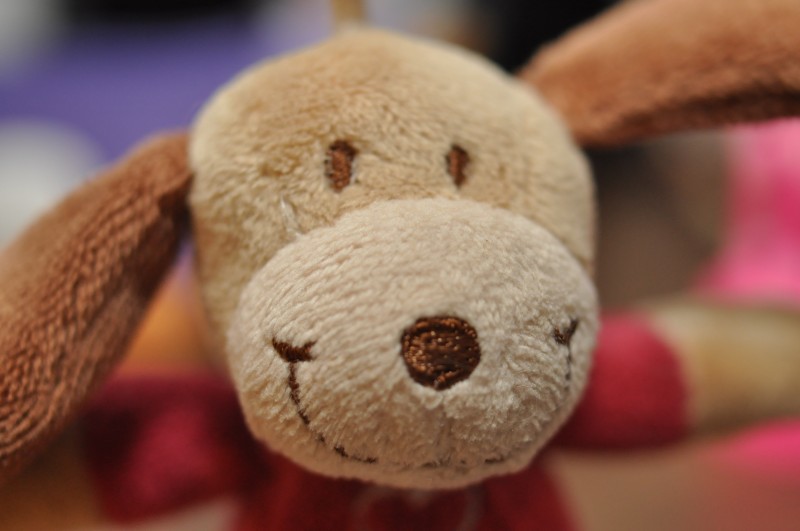
Interactive Play: How Training Toys Keep Your Dog Mentally Stimulated
Dog training toys aren’t just for fun; they are an essential tool for keeping your furry friend’s mind sharp and engaged. Interactive play is a key aspect of dog training toys that can significantly boost your pet’s cognitive health. Here’s how:
-
Encouraging Problem-Solving Skills: Interactive toys, such as puzzle feeders and treat dispensers, challenge your dog to figure out how to access their treats or toys. This process stimulates their brain, encouraging them to think and problem-solve. Dogs that are regularly challenged in this way are less likely to become bored or destructive.
-
Enhancing Memory: Many dog training toys are designed with hidden compartments or moving parts, requiring your dog to remember the location of treats or how to manipulate the toy. This not only exercises their memory but also reinforces the idea that patience and memory can lead to rewards.
-
Social Interaction: Interactive play can be a great way to engage with your dog and encourage social interaction. For example, toys that can be thrown, caught, or chased after promote bonding and can be used to teach commands like “fetch” or “come here.” This type of play also helps to tire out your dog, reducing the likelihood of excessive barking or other unwanted behaviors.
-
Stress Reduction: Dogs that are mentally stimulated are less likely to display signs of stress, such as excessive panting, pacing, or whining. Interactive toys can provide a calming effect, allowing your dog to focus their energy on an activity that doesn’t involve anxiety or nervousness.
-
Preventing Boredom: Dogs can get bored quickly, especially if they have the same toys every day. Interactive toys keep things fresh and interesting, providing a new challenge each time your dog plays with them. This constant novelty helps to maintain your dog’s curiosity and prevents boredom, which can lead to destructive behaviors.
-
Promoting Physical Health: While the primary focus is on mental stimulation, interactive toys can also promote physical activity. Toys that require your dog to move around or use their body to interact with them encourage exercise, which is crucial for maintaining a healthy weight and reducing the risk of obesity-related health issues.
-
Teaching New Skills: Many interactive toys are designed with training in mind. They can be used to teach your dog new commands, such as “drop it” or “leave it,” by rewarding them with a treat from the toy. This methodical approach helps to reinforce good behavior and teach your dog new tricks.
-
Customization for Different Dogs: Interactive toys come in a variety of shapes, sizes, and complexities, making them suitable for dogs of all ages and breeds. Puppies might enjoy simple tug-of-war toys, while older dogs may benefit from more sophisticated puzzle toys that keep their minds active.
-
Safe and Durable: High-quality interactive dog toys are designed with safety in mind, using materials that are non-toxic and durable. This ensures that your dog can play with these toys without risk of injury or ingestion of harmful materials.
-
Incorporating into Daily Routine: Making interactive play a regular part of your dog’s daily routine can have long-term benefits. It helps to establish a consistent schedule, which is important for dogs who thrive on routine. Plus, it allows you to spend quality time with your pet, which can strengthen your bond.
By incorporating interactive dog training toys into your pet’s playtime, you’re not just providing a source of entertainment; you’re investing in their overall well-being. Mental stimulation is as crucial to a dog’s health as physical exercise, and the right toys can help ensure your furry friend stays sharp, happy, and well-behaved.
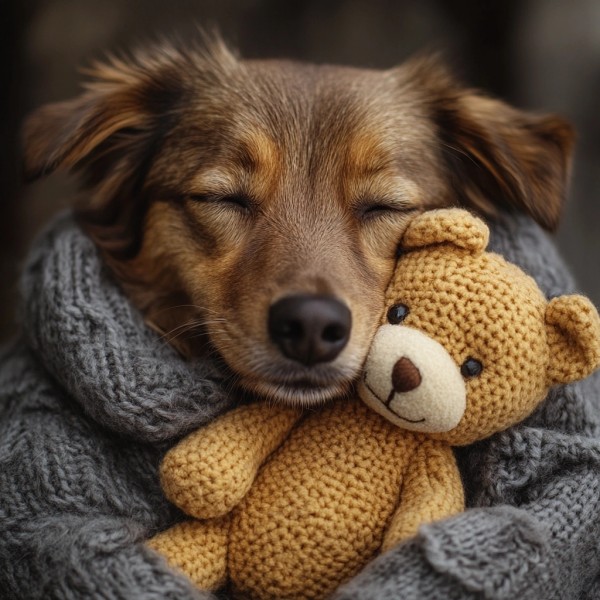
Top Picks for Dog Training Toys That Encourage Learning and Fun
Interactive Play: How Training Toys Keep Your Dog Mentally Stimulated
Dogs are known for their boundless energy and curiosity, but did you know that their minds also need regular exercise? Interactive play is a vital component of a well-rounded dog care routine, and training toys play a key role in keeping your furry friend’s mind engaged and stimulated. Here’s why these toys are more than just fun—they’re essential for your dog’s cognitive well-being.
1. Cognitive Challenges Spark Problem-Solving SkillsInteractive toys are designed to challenge your dog’s problem-solving abilities. Puzzles, treat dispensers, and hide-and-seek toys encourage your dog to think critically and figure out how to interact with the toy. This process can help prevent boredom and alleviate anxiety, as it provides a mental workout that mimics the natural hunting behavior of dogs.
2. Mental Engagement Reduces Boredom and Destructive BehaviorWhen a dog is bored, they often turn to destructive behaviors such as chewing on furniture or digging in the yard. Interactive toys can provide a healthy outlet for this energy, keeping your dog’s mind busy and reducing the likelihood of destructive actions. By engaging with these toys, dogs are less likely to seek out other, less desirable activities.
3. Social Interaction Through PlayInteractive play doesn’t always have to be solo. Many training toys are designed for both you and your dog to engage in play together, fostering a stronger bond. This social interaction can be particularly beneficial for dogs that may be shy or anxious, as it helps them feel more secure and connected to their owners.
4. Customizable Levels of DifficultyThe best interactive toys for dogs come with varying levels of difficulty. This allows you to adjust the challenge as your dog’s cognitive abilities improve. As your dog becomes more skilled at solving the puzzle, you can introduce more complex toys that require higher levels of thinking, ensuring that the mental stimulation is always fresh and exciting.
5. Encouraging Independent PlayWhile many owners enjoy playing with their dogs, it’s also important to encourage independent play. This helps your dog learn to entertain themselves when you’re not around, which is a valuable skill for both your dog’s mental health and your own peace of mind. Interactive toys are perfect for this, as they can keep your dog occupied for extended periods.
6. Promoting Healthy Eating HabitsFor dogs that are prone to overeating or obesity, interactive toys can be a game-changer. Feeding treats through puzzle toys can slow down their eating, which can help with digestion and prevent weight gain. It’s a win-win situation where your dog gets to enjoy their favorite treats while keeping their mind sharp.
7. Strengthening Brain HealthRegular mental exercise is not just beneficial for your dog’s immediate well-being; it can also contribute to their long-term brain health. As dogs age, keeping their minds active can help slow down cognitive decline and keep their minds sharp well into their golden years.
8. Learning New Commands and TricksInteractive toys can also be a tool for teaching new commands or tricks. You can use them to reinforce behaviors by associating the toy’s use with a specific command. This creates a fun and rewarding learning experience for your dog.
9. Encouraging Physical ActivityWhile mental stimulation is a primary focus, interactive toys can also encourage physical activity. Some toys require your dog to move around, jump, or retrieve them, which can help keep your dog fit and healthy.
10. Diverse Range of OptionsThe beauty of interactive toys is the wide variety available. From simple treat-dispensing balls to complex maze puzzles, there’s a toy to suit every dog’s preferences and abilities. This diversity means you can always find something that will engage your dog’s interest and challenge their mind.
In conclusion, interactive training toys are a fantastic way to keep your dog’s mind active and engaged. By providing cognitive challenges, promoting independent play, and strengthening the bond between you and your dog, these toys are an invaluable part of a balanced dog care routine. Remember, a dog with a healthy, active mind is more likely to be a well-behaved and contented pet.
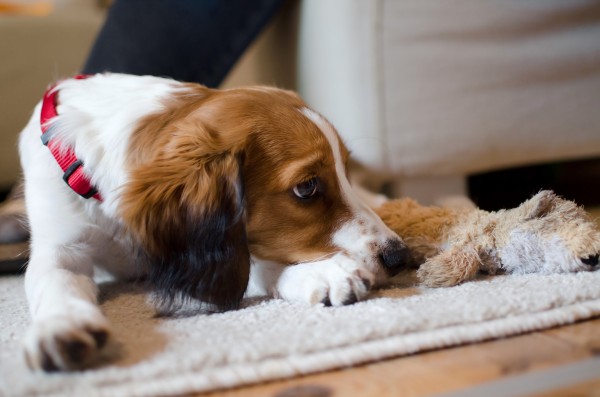
Introducing Your Dog to New Toys: A Step-by-Step Guide
Introducing your dog to new toys is a delightful experience that can enhance their playtime and contribute to their overall development. Here’s a step-by-step guide to help you make the transition smooth and enjoyable for both you and your furry friend.
Start Small and SimpleBegin with toys that are not overwhelming in size or complexity. A simple rubber ball or a soft plush toy can be a great starting point. This allows your dog to get used to the idea of having new items to interact with without feeling overwhelmed.
Present Toys in a Positive MannerWhen introducing a new toy, do so in a calm and positive environment. Hold the toy in your hand and let your dog sniff it, which is a natural way for them to explore. Encourage your dog to investigate the toy by using a gentle voice and positive body language.
Encourage Interaction GraduallyOnce your dog shows interest, encourage them to interact with the toy. You can throw a ball for them to fetch or gently tug on a plush toy to see if they respond. This helps your dog understand that the toy is meant for play and engagement.
Offer ChoicesGive your dog a variety of toys to choose from. This not only increases the likelihood that they’ll find something they enjoy but also allows them to develop preferences. Some dogs may prefer a toy with a bell, while others might be more intrigued by a treat-dispensing puzzle.
Integrate Toys into Daily RoutineIncorporate toy play into your dog’s daily routine. Use toys during training sessions to reinforce commands, or as a reward for good behavior. This helps your dog see toys as a regular part of their day, rather than a special occasion item.
Monitor Your Dog’s ResponseObserve how your dog interacts with the new toy. If they seem disinterested or stressed, it might be a sign that the toy isn’t a good fit. In that case, try a different type of toy or consult with a professional to find the right match for your dog’s personality and preferences.
Teach Your Dog How to Play NicelySome dogs may get overly excited or aggressive with new toys. It’s important to teach them how to play appropriately. If you notice any signs of rough play or possessiveness, redirect their behavior and show them how to use the toy gently.
Use Toys as a Tool for Mental StimulationToys that require problem-solving, such as puzzle feeders or interactive treat dispensers, can be excellent for mental stimulation. These toys encourage your dog to think and work for their treats, which can be particularly beneficial for dogs that tend to overeat or become bored easily.
Keep Toys Clean and SafeRegularly clean your dog’s toys to prevent the buildup of bacteria and dirt. Inspect toys for any signs of wear and tear, such as frayed strings or broken pieces, and replace them if they pose a choking hazard or are no longer safe to use.
Introduce New Toys SlowlyWhen introducing a new toy, do it gradually. Allow your dog to become accustomed to it over a few days or weeks. This helps them to associate the toy with positive experiences and reduces the chance of them ignoring or destroying it.
Reward and PraiseThroughout the process, be sure to reward and praise your dog for their interactions with new toys. This reinforces the idea that playing with toys is a good behavior and can make them more likely to engage with their toys in the future.
Be Patient and ObservantIntroducing new toys to your dog is a learning experience for both of you. Be patient as your dog figures out how to play with the new items. Observing their behavior can give you valuable insights into their preferences and needs.
Remember, It’s About the BondThe ultimate goal of introducing new toys is to strengthen the bond between you and your dog. By choosing toys that your dog enjoys and engaging in play together, you create positive memories that can last a lifetime.

The Benefits of Using Dog Training Toys for Different Ages and Breeds
Introducing a new toy to your dog can be a delightful experience, but it’s important to consider how different ages and breeds may react differently to these new additions. Here’s how you can tailor your approach to ensure that both you and your furry friend enjoy the benefits of dog training toys.
For Puppies: Puppies are like sponges, eager to learn and explore. When introducing them to new toys, it’s crucial to select items that are safe, durable, and engaging. Small, soft toys that can be easily carried around and manipulated are perfect for this age group. Puppies have a natural instinct to chew, so toys that are made of sturdy materials like rope or durable rubber can help satisfy this urge without causing harm. Additionally, interactive toys that encourage problem-solving can stimulate their developing minds. It’s also wise to introduce a variety of textures to keep their senses sharp and to prevent them from getting bored with the same toy too quickly.
Young Dogs: As dogs grow into their adolescence, their energy levels and curiosity peak. This is the time to introduce more complex toys that challenge their intellect and keep them active. Puzzle toys that require dogs to figure out how to get treats or toys out can be incredibly beneficial. These toys not only stimulate mental activity but also help to prevent obesity by encouraging physical exercise. It’s important to choose toys that are appropriate for their size and strength to avoid any potential damage to the toy or injury to the dog.
Adult Dogs: Adult dogs may have different needs based on their breed and energy levels. For instance, breeds like Labradors and Golden Retrievers are known for their intelligence and require toys that challenge their minds. Treat-dispensing toys can be a great way to keep them engaged while also reinforcing good behavior. For breeds that are more laid back, simpler toys like plush animals or a good old-fashioned tug-of-war rope can provide the mental stimulation and physical activity they need. It’s also a good idea to introduce new toys periodically to keep their interest and prevent boredom.
Senior Dogs: As dogs age, their physical abilities may decline, but their desire to play and learn doesn’t diminish. Toys that are easy to grasp and manipulate can be particularly beneficial for older dogs. Squeaky toys can provide a nostalgic reminder of their youth, while interactive toys that require less physical exertion can help maintain their cognitive health. It’s important to consider the size of the toy, as well as the material, to ensure it’s comfortable for them to hold and use. Gentle toys made of soft materials can be soothing and provide comfort for senior dogs.
Breed-Specific Considerations: Some breeds are naturally more active and intelligent, requiring toys that cater to these traits. For example, herding breeds like German Shepherds and Border Collies thrive on mental challenges and can be trained to use toys that simulate their work. On the other hand, breeds like Bulldogs and Pugs may have shorter snouts and could benefit from toys that are easier to pick up and manipulate. Always consider the specific characteristics of your dog’s breed when selecting training toys.
Safety First: No matter the age or breed, safety should always be a top priority. Ensure that toys are free of small parts that could be swallowed, and that they are made from non-toxic materials. Regularly inspect toys for any signs of wear or damage, and replace them if they begin to break down.
Integrating Toys into Training: Using toys as part of your dog’s training routine can be incredibly effective. Toys can be used as rewards for good behavior, or as a way to distract your dog from unwanted behaviors. For instance, if your dog tends to bark excessively, a toy can be used to redirect their attention and teach them a more appropriate behavior.
In conclusion, the benefits of using dog training toys for different ages and breeds are vast. By selecting the right toys and integrating them into your dog’s daily routine, you can help maintain their physical and mental health, strengthen your bond, and ensure that your furry friend remains a well-behaved and happy companion.
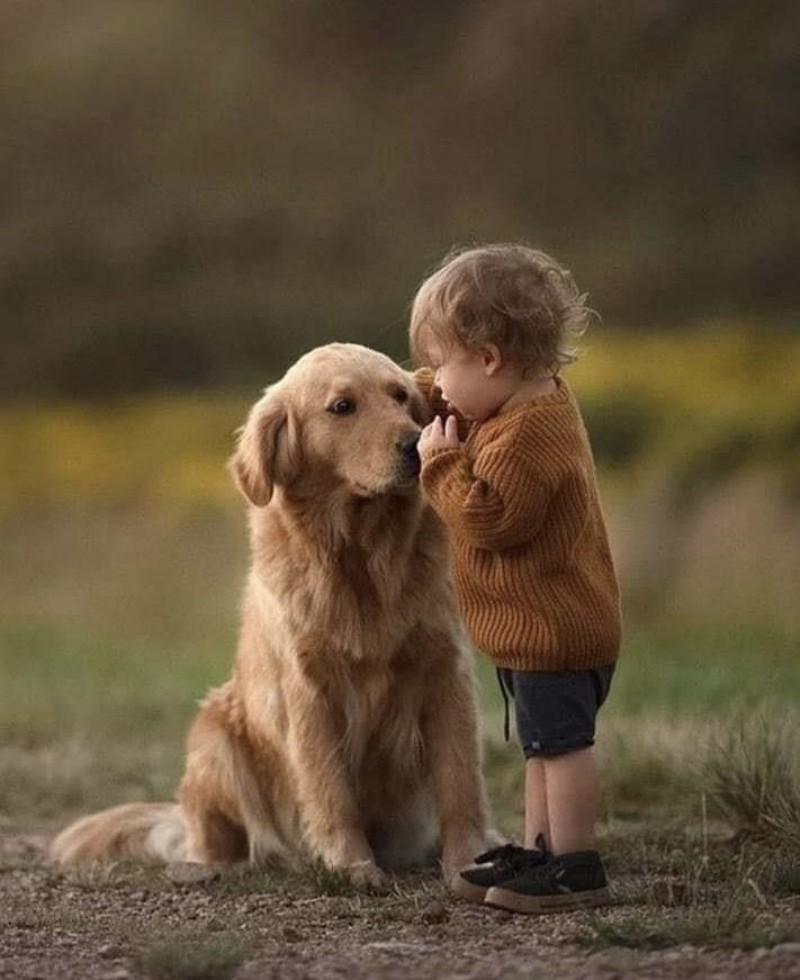
How to Choose the Right Dog Training Toy for Your Furry Friend
Choosing the right dog training toy for your furry friend is a crucial task that can greatly impact your pet’s development and enjoyment. Here are some key factors to consider when selecting a toy that’s not just fun but also beneficial for your dog’s training and well-being.
Size and Shape Considerations
The size and shape of a dog training toy should align with your dog’s size and breed. A toy that’s too large or too small can be ineffective or even dangerous. For instance, a large breed like a German Shepherd might not be interested in a tiny toy, while a small dog like a Chihuahua could easily swallow a toy meant for a larger breed. Pay attention to the dimensions of the toy and ensure it’s proportionate to your dog’s mouth and body size.
Durability and Material
Durability is key, especially if you have a dog that’s a chewer or a strong puller. Toys made from sturdy materials like natural rubber, heavy-duty nylon, or reinforced fabrics are less likely to be destroyed during play. It’s also important to consider the material’s safety; avoid toys with small parts that can be easily chewed off and swallowed, or toxic paints and coatings.
Functionality and Training Goals
Think about the specific training goals you have for your dog. Toys that encourage puzzle-solving can be great for mental stimulation, while those that help with recall or retrieval can be excellent for physical exercise. For example, a treat-dispensing toy can reinforce commands like “sit” or “stay” by rewarding your dog with a treat after completing the task.
Safety Features
Safety should always be a top priority. Look for toys with non-toxic materials, smooth edges to prevent cuts, and no small parts that could pose a choking hazard. Toys designed with safety in mind often have features like reinforced stitching or a tough outer shell that protects the toy’s inner contents.
Age-Appropriate Toys
Dogs of different ages have varying needs and interests. Puppies, for instance, might be more attracted to soft, plush toys that are gentle on their developing teeth, while older dogs might appreciate toys that help keep their minds sharp and their bodies active. Consider your dog’s age and energy level when selecting a toy.
Breed-Specific Needs
Certain breeds may have specific toy preferences or needs. For example, herding dogs might enjoy toys that mimic the behavior of chasing a ball or Frisbee, while Retrievers may be naturally inclined to fetch. Understanding your dog’s breed characteristics can help you choose a toy that resonates with their natural instincts.
Interactive Features
Interactive toys can enhance the bond between you and your dog while also providing mental stimulation. Look for toys that encourage playtime together, such as tug-of-war ropes, treat-dispensing puzzles, or toys that you can throw for your dog to fetch.
Customization
Some dogs have very specific likes and dislikes. If your dog has a particular favorite type of toy, consider purchasing multiples or variations of that toy to keep them entertained. You can also customize toys by adding your dog’s name or favorite scent to create a more personal experience.
Regular Maintenance and Inspection
Even the sturdiest toys will eventually show signs of wear. Regularly inspect your dog’s toys for any damage or signs of wear, and replace them as necessary. This ensures that your dog remains safe and that the toys continue to serve their intended purpose.
By carefully considering these factors, you can select a dog training toy that is not only enjoyable for your furry friend but also beneficial for their training and overall health. Remember, the right toy can be a game-changer in your dog’s life, helping them to learn, stay entertained, and maintain a healthy lifestyle.

Creative Ways to Use Dog Training Toys for Daily Engagement
Dog training toys aren’t just for teaching your furry friend new tricks; they’re also a fantastic way to keep them engaged and entertained every day. Here are some creative ways to incorporate these toys into your dog’s routine:
-
Hide-and-Seek with Treats: Transform your dog’s favorite training toy into a treasure hunt. Fill it with treats or small pieces of kibble and hide it around the house. Your dog will have to use their nose and problem-solving skills to find the hidden toy, offering both mental and physical exercise.
-
Teaching New Skills: Use your dog’s training toy to introduce new commands or tricks. For instance, if you have a treat-dispensing toy, you can encourage your dog to sit or stay in a certain position before they can work on getting their reward. This not only reinforces the command but also provides mental stimulation.
-
Interactive Puzzle Challenges: Many dogs thrive on puzzle toys that require them to figure out how to get to the treats inside. These can be as simple as a toy with a flip-top lid or as complex as a multi-layered puzzle. This type of play helps keep your dog’s mind sharp and can be a great way to start the day or wind down at night.
-
Outdoor Exploration: Take your dog’s training toy outside for a change of scenery. Hide the toy in a park or during a walk, encouraging them to search for it. This not only exercises their body but also stimulates their curiosity and natural hunting instincts.
-
Sniffing Games: Incorporate sniffing into your dog’s playtime by using a toy that doubles as a scent marker. You can place the toy near various scents around the house or in a garden to challenge your dog’s sense of smell. This is particularly beneficial for dogs who love to nose around.
-
Interactive Playdates: Arrange a playdate with other dogs and use a training toy as a communal activity. This can be especially fun for dogs that enjoy socializing and can help them learn to interact with toys in a group setting.
-
Teaching Patience: Use a toy like a slow-feeder bowl to teach your dog patience. It will take them longer to get to the food, encouraging them to be more mindful of their eating habits. This can be a great way to manage overeating and promote a healthier lifestyle.
-
Water Play: If your dog enjoys water, consider using a durable training toy designed for play in the pool or at the beach. Floating toys can provide hours of entertainment as your dog chases and retrieves them in the water.
-
Customize for Your Dog’s Preferences: Pay attention to what your dog enjoys most. Some dogs love tug-of-war, while others might be more interested in chasing after a ball. Tailoring the type of play to your dog’s preferences can make the experience more enjoyable and engaging.
-
Daily Routine Integration: Incorporate training toys into your dog’s daily routine. Use them during mealtimes, in between training sessions, or even as a way to calm your dog before bedtime. Consistency can help ensure that your dog stays interested and engaged.
Remember, the key to using dog training toys for daily engagement is to keep things varied and interesting. Dogs can quickly grow bored with the same old routine, so be creative and willing to try different activities. By doing so, you’ll not only keep your dog mentally stimulated but also strengthen the bond you share through shared play and fun.

Maintaining Your Dog’s Toy Collection: Tips for Longevity
Understanding your dog’s chewing habits is crucial when selecting toys that stand the test of time. Small dogs, known for their gentle nibbles, may do well with plush toys or durable rubber shapes. On the other hand, larger breeds, especially those with strong jaws, might prefer sturdy, interactive toys that can withstand rigorous play sessions. By matching the toy to your dog’s chewing intensity, you can ensure that your investment in their playtime will last longer.
Regular cleaning is the cornerstone of toy maintenance. While some toys are designed to be easily cleaned, like those made from rubber or plastic, others, such as plush toys, require more care. A gentle hand wash with mild soap and water can keep plush toys fresh and free from bacteria. For rubber or plastic toys, a quick rinse under the tap and a wipe with a cloth might suffice. It’s important to dry toys thoroughly after cleaning to prevent mold or mildew growth.
Dog toys are not just for play; they can also be a key component in your pet’s dental health routine. Toys that encourage chewing can help clean your dog’s teeth, reducing the risk of dental issues like tartar buildup. Look for toys with textures that allow for scraping against the teeth, such as those with nubs or grooves. Additionally, some toys are made with materials that naturally clean teeth as your dog chews.
Over time, toys can become worn out, which can pose a safety risk. Regularly inspect your dog’s toys for signs of damage, such as tears, rips, or frayed edges. If a toy is showing signs of wear, it’s best to replace it to prevent your dog from swallowing small pieces or risking injury. Keeping an eye on the condition of your dog’s toys is an essential part of maintaining their toy collection.
The environment in which your dog plays can greatly impact the longevity of their toys. Toys that are left outside or in high-traffic areas may degrade faster due to exposure to sunlight, rain, and dirt. Keeping toys indoors or in a protected area can help preserve them for longer. This is especially important for plush toys, which can fade and become brittle when exposed to harsh weather conditions.
Dogs have unique preferences when it comes to toys, and these preferences can change over time. Pay attention to which toys your dog seems to favor and which they ignore. This can help you rotate your collection, ensuring that your dog always has new and interesting items to play with. Regularly introducing new toys can also help keep your dog engaged and prevent boredom, which can lead to destructive behavior.
In the world of dog toys, there’s a wide range of materials used, each with its own benefits and drawbacks. Some dogs prefer the natural feel of wood, while others might love the interactive features of electronic toys. Here’s a quick rundown of common toy materials and their pros and cons:
-
Rubber: Durable and easy to clean, rubber toys are great for dogs that love to chew. They can be found in various shapes and sizes, making them versatile for different play styles.
-
Plush: Plush toys are comforting and can be a great way to provide mental stimulation. However, they can tear easily and may not be suitable for dogs that are heavy chewers.
-
Wood: Wooden toys are durable and can be treated with safe oils to make them even more appealing. They are also a great choice for dogs with sensitive teeth.
-
Plastic: Plastic toys are often interactive and come in a variety of shapes and sizes. They can be a bit heavy, but they are generally safe for dogs to chew on.
-
Silicone: Silicone toys are non-toxic, durable, and easy to clean. They are a good choice for dogs with allergies or sensitivities to certain materials.
-
Fabric: Fabric toys, like plushies, can be cozy and comforting, but they require more care to prevent damage and maintain cleanliness.
By understanding your dog’s preferences and the characteristics of different toy materials, you can make informed decisions about which toys to include in your collection. This knowledge will help you maintain a healthy and enjoyable toy rotation for your furry friend.
Remember, maintaining your dog’s toy collection is about more than just keeping them entertained. It’s about ensuring their safety and health. By regularly inspecting, cleaning, and rotating your dog’s toys, you can provide them with a diverse and engaging play experience that supports their physical and mental well-being. And with a little bit of care, those toys can be cherished companions for years to come.
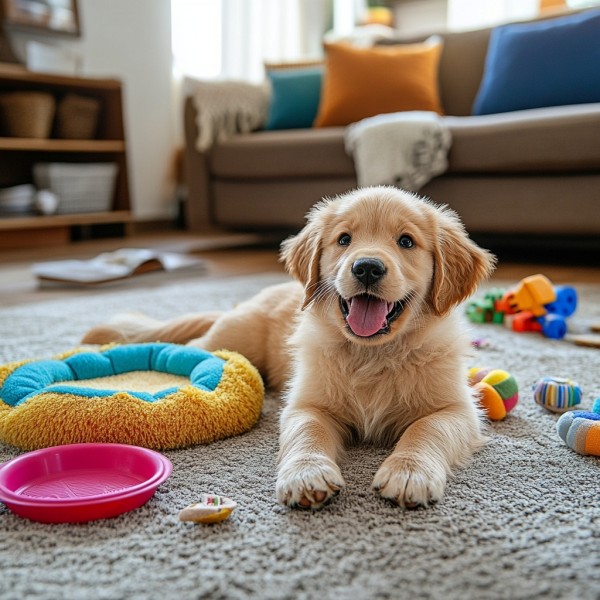
The Role of Dog Training Toys in Building a Strong Bond with Your Pet
Dog training toys aren’t just for teaching commands; they play a pivotal role in fostering a deeper connection between you and your furry companion. Here’s how these toys can help strengthen the bond you share:
Engaging with your dog through play is a fundamental aspect of building trust and understanding. When you use training toys, you’re not just providing entertainment; you’re creating shared experiences that can deepen your relationship. Whether it’s a tug-of-war with a rope or a puzzle game that challenges your dog’s mind, these activities encourage interaction and cooperation.
One of the key benefits of training toys is their ability to keep your dog engaged and entertained. A well-crafted toy can provide mental stimulation, which is crucial for maintaining your dog’s cognitive health. As dogs age, their senses may diminish, but their curiosity and need for mental exercise remain. Training toys can help keep older dogs sharp and prevent boredom, which can lead to destructive behaviors.
The physical interaction that comes with playing with training toys is also invaluable. It strengthens the bond between you and your dog as you engage in activities that require teamwork and coordination. The laughter, the excitement, and the joy of playing together can create lasting memories and a sense of unity.
Choosing the right training toy for your dog’s specific needs and preferences is important. A toy that is too difficult or too easy can lead to frustration or disinterest. For example, a puzzle toy that’s too complex for your dog might discourage them from playing with it, while one that’s too simple might not challenge their mind enough. Observing your dog’s play habits and interests can guide you in selecting the perfect toy.
Incorporating training toys into your daily routine can also help reinforce good behavior. For instance, if your dog has learned a new trick, you can reward them with a treat hidden inside a toy. This not only reinforces the behavior but also creates a positive association with the toy itself.
Dogs often respond well to toys that mimic the scents or textures of their natural environment. A toy that resembles a squirrel or a bird can stimulate their natural hunting instincts, providing both mental and physical exercise. Toys that have different textures, such as a plush toy with a tough rope attached, can cater to a variety of preferences and can be used in different ways to keep your dog interested.
The bond between a dog and their owner is often built on a foundation of trust and mutual respect. Training toys can help establish this by providing a sense of security and predictability. When your dog knows that playing with a specific toy is a positive experience, it can create a sense of comfort and reliability.
Moreover, the time spent with your dog while engaging with training toys can be a form of therapy. It allows you to step back and observe your dog’s behavior, which can be enlightening and rewarding. You may notice subtle changes in their mood, reactions, or even their physical health, all of which can provide valuable insights into your pet’s well-being.
Training toys can also be a great way to bond with multiple dogs in the household. By introducing a new toy that encourages cooperative play, you can encourage your dogs to interact with each other in a positive way, fostering camaraderie and reducing the likelihood of conflict.
It’s important to remember that the bond you share with your dog is a living, evolving thing. It requires consistent effort and attention to nurture. Training toys can be a tool in this process, helping you to stay connected with your pet and providing a fun, interactive way to reinforce the bond.
In conclusion, dog training toys are more than just playthings; they are essential components in the relationship you have with your pet. They encourage learning, provide mental stimulation, foster physical activity, and create shared experiences that strengthen the bond between you and your furry friend. By choosing the right toys and incorporating them into your daily routine, you can ensure that your bond remains strong, healthy, and filled with joy.

